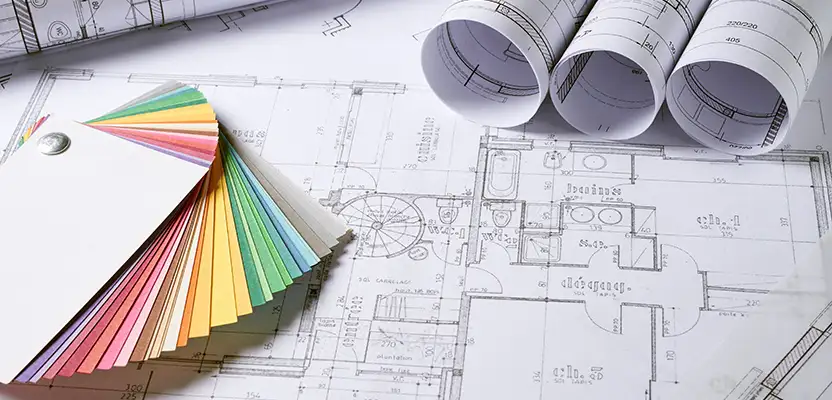Architect Salary Report by Location and Experience
Architect Salary Report by Location and Experience
Blog Article
Understanding the Diverse Job Paths Available for Aspiring Architect
As a hopeful Architect, you have a globe of career paths waiting for you. Whether you're attracted to traditional design or the subtleties of lasting design, there's a specific niche that lines up with your passions.
Traditional Design: Creating Structures and Structures
Conventional architecture concentrates on creating structures and frameworks that blend functionality with aesthetic charm. As you discover this area, you'll value the detailed equilibrium in between kind and purpose. You'll learn to draw inspiration from historical styles, incorporating elements like symmetry, materials, and craftsmanship. Your designs can mirror cultural heritage, showcasing local practices while fulfilling modern-day demands.
You'll establish skills in preparing, model-making, and site evaluation, permitting you to envision and communicate your ideas successfully. Involving with customers, you'll require to understand their vision and translate it into practical layouts.
Additionally, constructing codes and sustainability methods are necessary in your job, guaranteeing your structures are safe and eco pleasant. As you expand in your career, you'll locate chances in domestic, business, or also repair jobs, each offering one-of-a-kind obstacles. Accepting traditional style paves the means for a satisfying career that admires the past while shaping the future.
Urban Preparation: Forming Communities and Public Spaces
As an aspiring Architect, you can play a necessary function as a city coordinator, changing exactly how communities communicate and function. By using community involvement techniques, you'll guarantee that homeowners have a voice fit their environment. And also, integrating lasting style principles will aid produce rooms that not just meet today's demands but likewise protect the future.
Function of Urban Planners
While many may assume of designers as the single dreamers behind buildings, metropolitan organizers play a necessary role in shaping the wider landscape of areas and public rooms. They analyze land use, zoning regulations, and community needs to produce sustainable atmospheres that boost quality of life. By teaming up with different stakeholders, you'll aid develop parks, transport systems, and houses that promote social communication and availability. Urban planners additionally concentrate on ecological considerations, making certain that developments incorporate green spaces and support biodiversity. Your competence in spatial layout and community dynamics allows you to visualize future development while preserving cultural heritage. In this crucial function, you'll directly influence how people experience their environments, making every job a chance for positive change.
Community Interaction Methods
Reliable area engagement methods are essential for urban organizers to guarantee that the voices of citizens are heard and valued in the planning procedure. To foster significant discussion, you should focus on open forums and workshops where neighborhood members can share their ideas and problems. By actively paying attention and integrating responses, you'll produce rooms that reflect the neighborhood's needs, ultimately leading to even more successful and lasting city atmospheres.
Sustainable Layout Concepts
When designing urban spaces, incorporating sustainable style principles is critical for creating atmospheres that thrive both ecologically and socially. You ought to start by concentrating on power performance, utilizing materials that decrease waste and advertise recycling. Think about incorporating environment-friendly areas, like yards and parks, to improve biodiversity and boost air quality. Promoting walkability and public transportation can reduce reliance on cars, cultivating a much healthier neighborhood.
Creating with water conservation in mind is additionally essential-- consider rain yards and permeable surface areas to manage stormwater. Including community participants during the planning procedure assurances that the rooms you produce satisfy their needs and encourage social communication. By accepting these principles, you'll add to lively, sustainable metropolitan landscapes that benefit every person.

Landscape Style: Developing Lasting Exterior Settings
As you check out landscape style, you'll uncover crucial style principles that develop attractive and useful outside rooms. Lasting methods play an important function in making certain these atmospheres thrive while decreasing environmental influence. Plus, you'll locate a range of career chances that permit you to make a genuine distinction in how individuals interact with nature.
Style Concepts in Landscape
Comprehending layout principles in landscape style is vital for developing sustainable exterior environments that balance with nature. You'll require to contemplate components like balance, percentage, and scale to assure your designs really feel cohesive and welcoming. Including native plants not just boosts biodiversity however additionally reduces water use, making your landscape resistant. Think of the circulation of room and just how people communicate with it; paths and seating locations should invite exploration and leisure. In addition, focus on seasonal changes, developing with products that match the environments year-round (Architect). By focusing on sustainability and aesthetic appeals, you can develop exterior rooms that improve the area and advertise well-being. Embracing these concepts will set a solid foundation for your job in landscape architecture.
Lasting Practices Review
Lasting practices in landscape design not only concentrate on aesthetics however likewise focus on eco-friendly health and resource preservation. You can make spaces that promote dirt wellness, such as utilizing natural products and exercising permaculture principles. Eventually, these methods assure your layouts benefit both people and the atmosphere for years to come.
Career Opportunities Exploration
With a strong structure in lasting techniques, landscape design provides a variety of profession paths that enable you to make a significant impact on the atmosphere. Urban coordinators usually work together with landscape architects to develop eco-friendly rooms in metropolitan settings, improving city livability. If you're passionate regarding education, take into consideration becoming a landscape style teacher, inspiring future generations.
Lasting Layout: Focusing on Eco-Friendly Practices
As you discover your profession in style, embracing eco-friendly methods can establish you apart in a competitive area. Sustainable style concentrates directory on creating structures that minimize environmental influence while enhancing passenger well-being. By integrating eco-friendly materials, energy-efficient systems, and sustainable structure techniques, you'll add to a greener future.
Start by getting knowledge of eco-friendly accreditations like LEED or BREEAM, which can reinforce your qualifications. Consider exactly how natural light, air flow, and thermal efficiency can maximize layout. Work together with designers and ecological consultants to innovate services that lower waste and conserve resources.
Don't forget the value of area participation-- engaging local stakeholders can inspire designs that balance with the atmosphere. As clients progressively focus on sustainability, your competence in green techniques will certainly not just bring in tasks yet additionally accomplish your interest for liable style. Accept this vital facet of that site the career, and enjoy your occupation grow.
Historical Conservation: Securing and Bring Back Social Heritage
While you start on your building trip, consider the vital duty of historic preservation in keeping our cultural heritage. This field concentrates on the protection and repair of substantial structures, sites, and structures that inform the tales of our past. By taking part in historic preservation, you'll aid secure the architectural legacy that forms area identity.
As a historic conservation Architect, you'll analyze historic importance and assess the problem of frameworks. You'll work carefully with historians and conservationists to guarantee genuine remediation strategies are used. This profession course enables you to mix creative thinking with study, enabling you to design remedies that value initial materials and craftsmanship.
Your work not only adds to sustainability by recycling existing buildings but additionally promotes a sense of satisfaction within areas. Embracing this path will certainly assist you end up being a guardian of history, maintaining the stories and aesthetics that improve our lives.
Inside Design: Enhancing Indoor Spaces
Historical preservation and indoor style both share a commitment to improving the built environment, but they concentrate on different elements. While historic preservation stresses maintaining a structure's historic and social worth, indoor design absolutely nos in on enhancing interior areas for performance and aesthetic appeals.
As a hopeful Architect, you'll locate that indoor design allows you to mix imagination with technological skills. You'll make spaces that not only look great however additionally advertise convenience and performance. This area entails recognizing just how light, shade, and products connect within a room, affecting state of mind and use.
You'll function on numerous tasks, from household homes to business workplaces, making sure that each atmosphere satisfies the requirements of its residents. By prioritizing user experience, you can change insides right into inspiring and practical rooms, making a significant effect on just how individuals communicate with their surroundings. Accept the opportunity to enhance interior settings and form the method people function and live.
Industrial Style: Combining Performance With Aesthetic Appeals
Industrial design plays an important duty in developing products that seamlessly mix aesthetic appeals with functionality, ensuring that what you make use of everyday is not just aesthetically appealing yet likewise useful. As an ambitious Architect, you can engage yourself in this area, concentrating on making whatever from about his furnishings to consumer electronic devices. Your work entails recognizing user demands, materials, and making processes, allowing you to produce innovative options that enhance daily experiences.
In industrial style, you'll typically team up with engineers, producers, and marketers, ensuring that your styles are not just gorgeous however additionally feasible. You'll learn to balance kind and feature, focusing on usability without compromising style. By refining your abilities in laying out, 3D modeling, and prototyping, you'll be well-equipped to bring your concepts to life. This career path provides a dynamic atmosphere where creative thinking fulfills usefulness, making it a rewarding choice for architects interested in shaping the products of tomorrow.
Often Asked Questions
What Educational Qualifications Do I Need to Come To Be a Designer?
To become an engineer, you'll require a professional level in design, usually a Bachelor's or Master's. Additionally, you'll need to complete a teaching fellowship and pass the Architect Registration Exam to practice legitimately.
Are There Certification Demands for Different Building Career Paths?
Yes, there're qualification requirements for numerous architectural courses. Architect. You'll need to pass tests, complete teaching fellowships, and in some cases seek specialized training, depending upon your chosen focus, like landscape architecture, metropolitan design, or historical preservation
What Software Program Skills Are Crucial for Designers Today?

How Can I Gain Practical Experience While Studying Style?
You can get useful experience by interning at architectural companies, taking part in style competitions, volunteering for neighborhood projects, or teaming up with classmates on real-world tasks. These opportunities improve your skills and develop beneficial connections in the sector.
What Task Opportunities Exist Outdoors Traditional Design Firms?
You can explore different work opportunities outside standard architecture firms, like city planning, interior decoration, landscape architecture, building monitoring, genuine estate growth, or even functions in sustainability consulting. Each deals distinct obstacles and rewards.
Whether you're drawn to typical style or the subtleties of lasting layout, there's a niche that lines up with your interests.When creating city rooms, incorporating sustainable style concepts is critical for creating atmospheres that prosper both environmentally and socially.As you explore landscape architecture, you'll discover vital style concepts that develop practical and stunning outside rooms.Recognizing design principles in landscape architecture is vital for producing sustainable outside settings that integrate with nature.In commercial style, you'll commonly team up with producers, marketers, and designers, ensuring that your layouts are not just attractive yet likewise practical.
Report this page